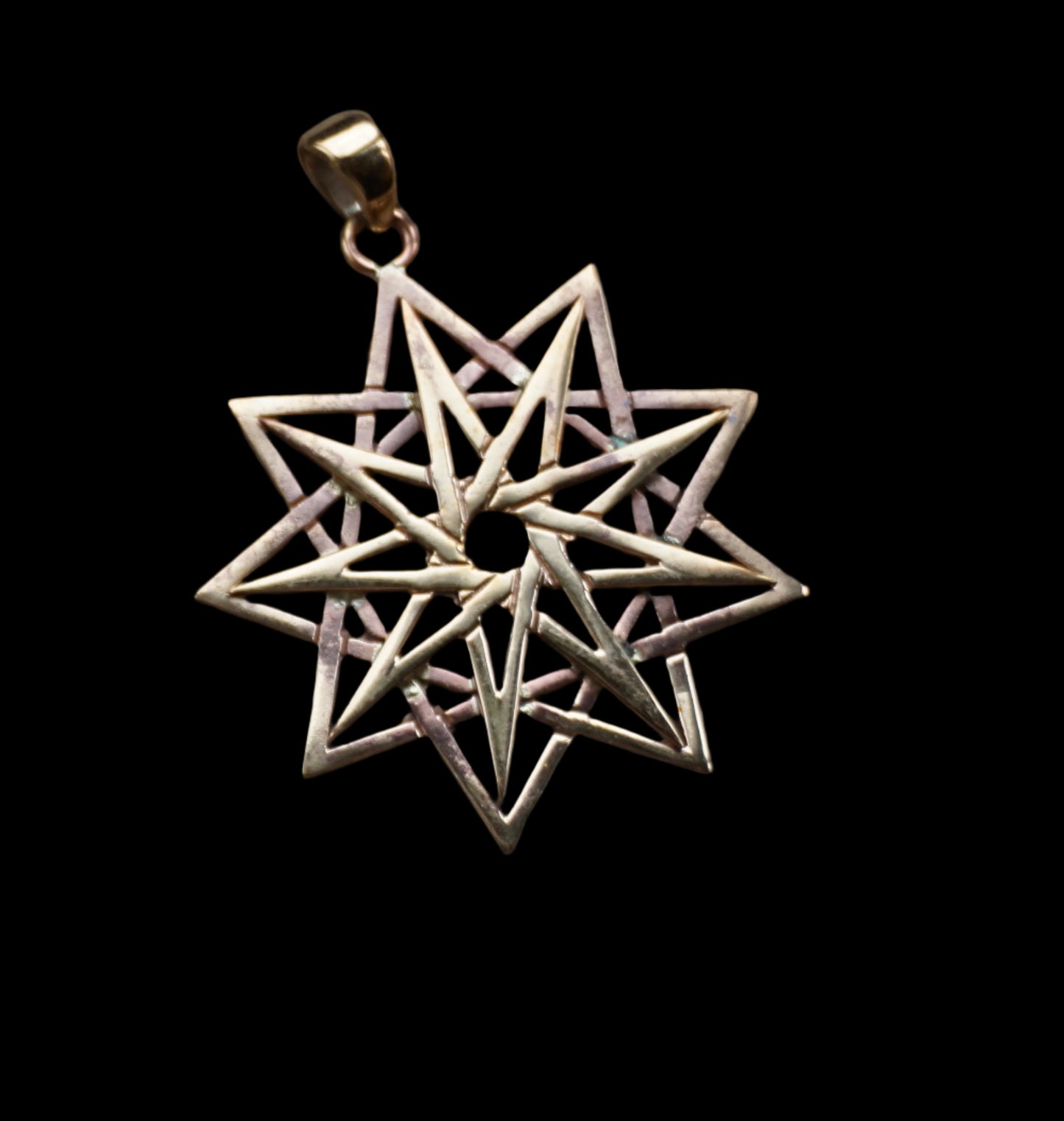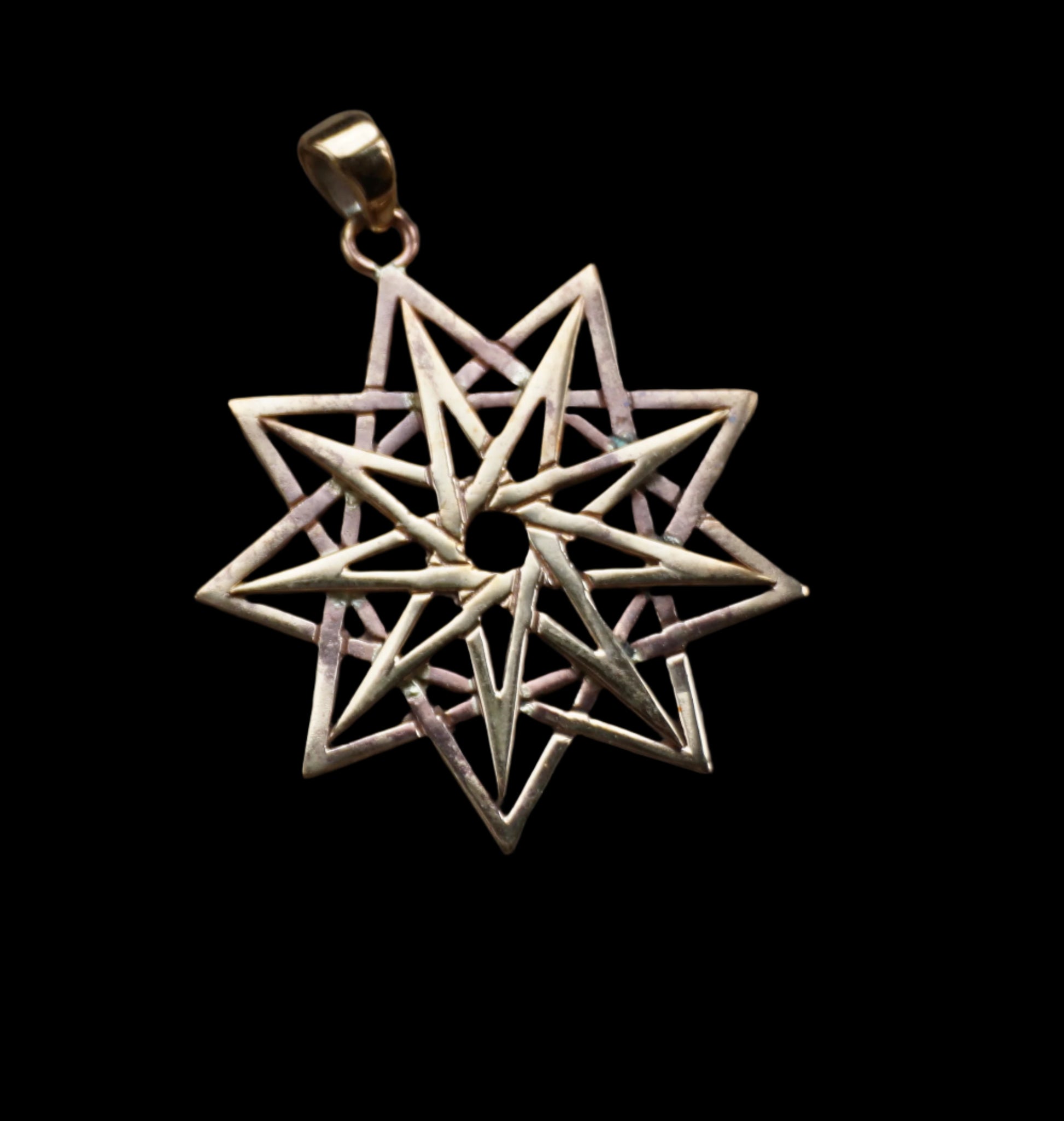Portal Glastonbury
Ref.SM0034 - Enneagram
Ref.SM0034 - Enneagram
Couldn't load pickup availability
Ref.SM0034 - Enneagram (nine pointed star)
The enneagram, a nine-pointed geometric figure often inscribed within a circle, carries profound symbolic significance rooted in its structure, sacred geometry, and its use in psychological and spiritual contexts. Without invoking deities or divine references, its meaning centers on interconnectedness, self-discovery, balance, and the complexity of human experience, reflecting universal patterns in nature, relationships, and personal growth.
Symbolic Significance
At its core, the enneagram symbolizes interconnectedness and unity within diversity. The nine points, connected by lines forming an irregular polygon, represent distinct aspects—whether personality types, perspectives, or energies—that are linked within a cohesive whole. The circle enclosing the figure emphasizes completeness, suggesting that all parts, despite their differences, contribute to a unified system. This mirrors natural and social networks, like ecosystems or communities, where individual elements interact to create harmony, making the enneagram an emblem of collective interdependence.
The number nine is key, symbolizing completion and complexity. In numerology, nine often represents the culmination of a cycle, integrating all prior stages (1 through 8) into a holistic state. The enneagram’s nine points reflect this, symbolizing the full spectrum of human traits, emotions, or paths to growth. Each point is unique yet connected, suggesting that diversity is essential to wholeness, encouraging acceptance of varied viewpoints or inner facets.
The internal lines of the enneagram, connecting points in a specific pattern (e.g., 1-4-2-8-5-7-1 and 3-6-9), symbolize dynamic movement and transformation. These paths illustrate how one aspect influences another, reflecting the fluidity of personal development or relational dynamics. The figure’s structure suggests that growth involves navigating between strengths and challenges, moving toward balance through integration of opposing or complementary traits.
Balance and duality are also central. The enneagram’s triangular and hexagonal inner shapes evoke stability (triangle) and adaptability (hexagon), symbolizing the tension between fixed identity and evolving potential. This balance reflects life’s interplay of order and change, urging resilience and flexibility in facing personal or collective challenges.
Spiritual and Philosophical Significance
Spiritually, the enneagram is a tool for self-discovery and inner growth. Its nine points, often tied to personality types in modern systems (e.g., the Enneagram of Personality), symbolize different ways of being—each with strengths, fears, and growth paths. Contemplating the figure encourages introspection, helping individuals understand their core motivations and how they relate to others. It fosters self-awareness, symbolizing the journey toward integrating one’s fragmented self into a harmonious whole.
The enneagram’s circular form represents cyclical renewal and eternity. It suggests that personal growth is not linear but iterative, with each cycle deepening understanding, much like seasons or life phases. This cyclicality encourages patience and trust in the process of becoming, emphasizing that setbacks are part of evolution.
Philosophically, the enneagram challenges simplistic views of identity. Its interconnected points show that no one is defined by a single trait; instead, people embody a spectrum of tendencies influenced by context and relationships. This promotes a holistic perspective, valuing the complexity of human nature and encouraging empathy for others’ unique paths.
Cultural Contexts
Historical Roots: The enneagram’s origins are debated, but it’s linked to ancient traditions, possibly Pythagorean geometry or Sufi mysticism, symbolizing universal patterns. George Gurdjieff used it in the early 20th century to represent human processes and cosmic laws, emphasizing movement and transformation.
Modern Psychology: In the 1970s, Oscar Ichazo and Claudio Naranjo developed the Enneagram of Personality, mapping nine types to psychological traits. Here, the figure symbolizes self-understanding and relational dynamics, widely used in therapy, coaching, and personal growth.
Art and Symbolism: The enneagram appears in mandalas, jewelry, and tattoos, symbolizing balance and self-discovery, appealing to those exploring identity or interconnectedness.
Global Traditions: Similar nine-pointed symbols in Buddhist or esoteric systems reflect cycles and unity, reinforcing the enneagram’s universal appeal as a map of human experience.
The enneagram’s symbolic significance weaves together interconnectedness, self-discovery, balance, and cyclical growth. It embodies the unity of diverse traits, the dynamic paths of transformation, and the harmony of complexity, inviting reflection on one’s inner journey and place within life’s interconnected web.
Type: medallion
Material: brass
Size: 40mm/1.57in approx.


